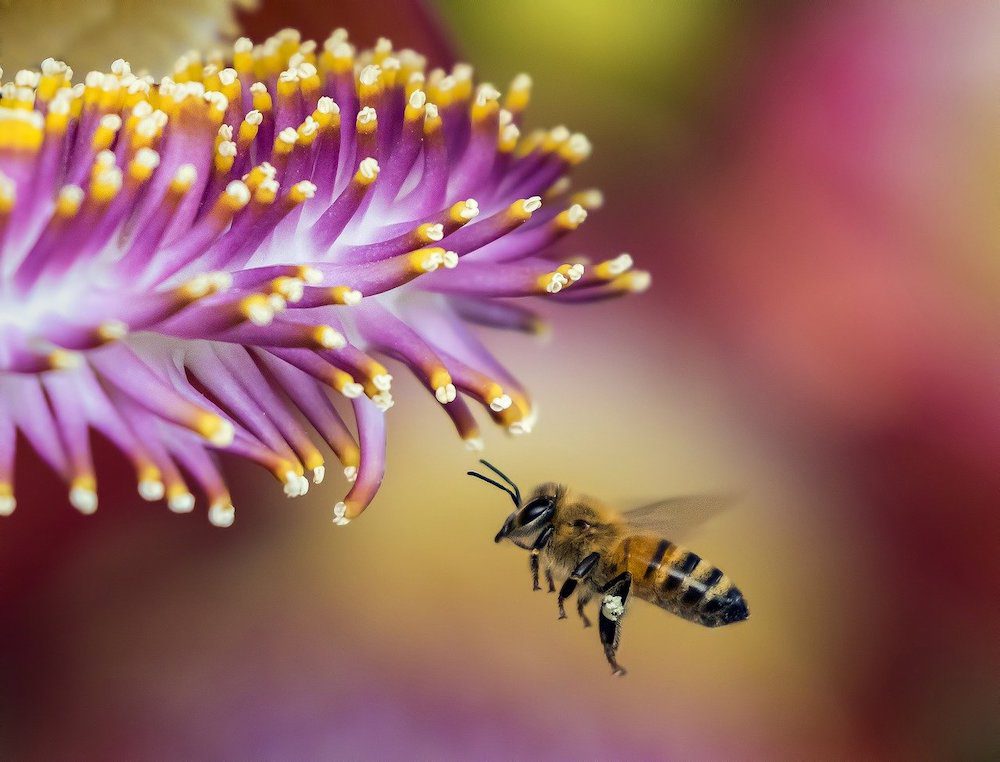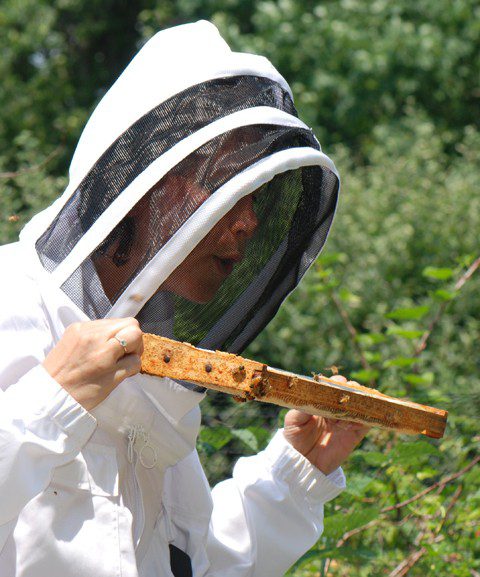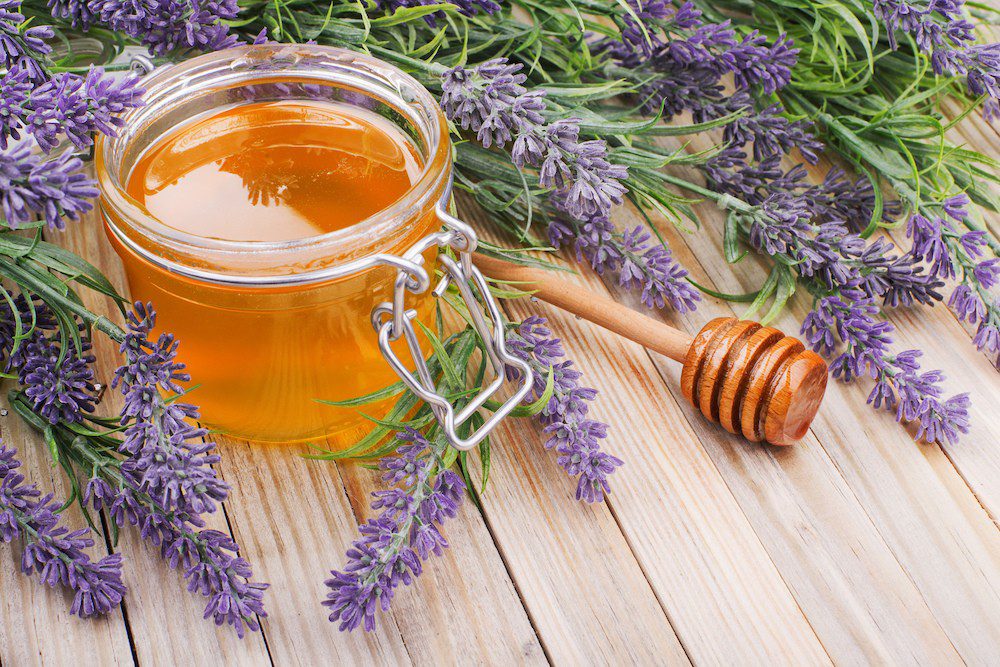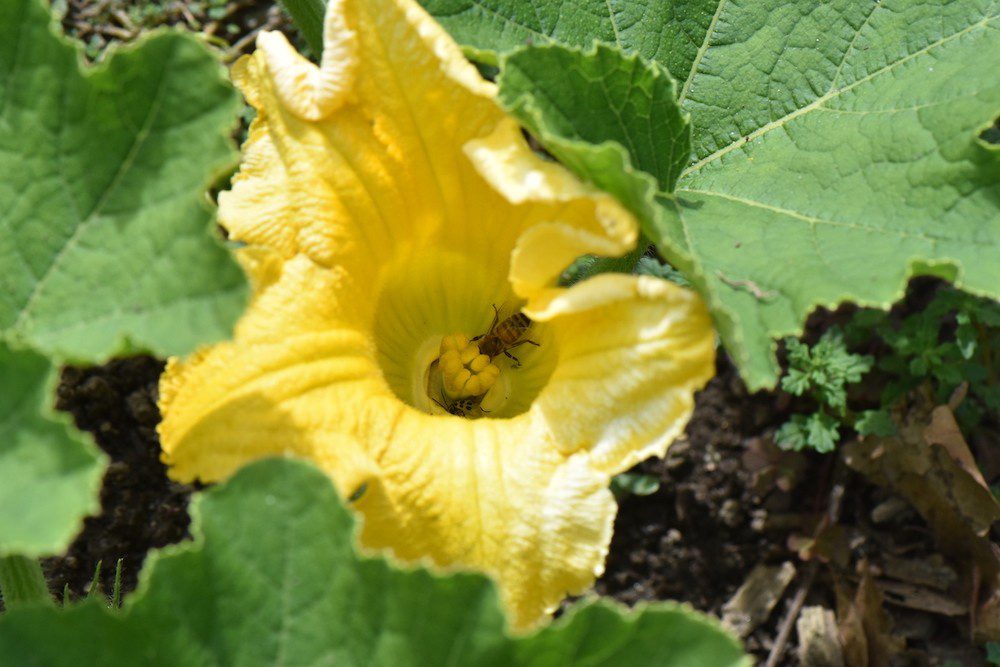World Honey Bee Day and Appreciating Floral Infused Honey
By Jill Brooke

In honor of World Honey Bee Day, which was created in August of 2009 to raise awareness of the benefits and environmental needs of honey bees, we are supposed to recognize beekeepers who tend the hives.
And this year we want to put a spotlight on Flower Power Daily’s friend, Karen Sabath, who is an avid beekeeper as well as helping run the environmental group Bedford 2020.
We asked her for suggestions on creating gardens that will attract honeybees which are necessary for pollination and making sure our food supply remains intact. Of course, bees are also essential for activating flowers so their colors brighten the landscape.
“Honeybees are like the canary in the coal mine,” she says. “They tell us when we are not harming nature and being healthy.”

They also produce honey which is an ideal way to sweeten everything from iced tea to baked goods. How can anyone resist clover or Manuka honey? Sabath says that people can also add flavors to their kinds of honey if they choose to cultivate them vs. attracting them to pollinate their gardens.
Actually, honey bees only represent a small fraction of the roughly 20,000 known species of bees but are an essential part of the food chain.
Sabbath suggests these FIVE TIPS to attract honey bees in your garden.
1) PLANT BLUE, PURPLE AND WHITE FLOWERS
While hummingbirds may like red flowers, honey bees like blue, purple and white flowers such as lilies, salvia, lavender and delphiniums. Actually, the more fragrant the better.
2). PLANT FLOWERS IN CLUSTERS
By planting in large clusters, the bees have more fun. They will stay longer in the garden and your garden will also look better.
3) AVOID USING ANY PESTICIDES
It’s tempting because you worry about ticks, especially for children. Implement other techniques to get rid of ticks including creating a pattern of checking yourself and your family members after you leave the garden. Pesticides are really harmful since bees can take those chemicals to other food sources. Many of the pesticides have bifenthrin which reduces the fecundity of bees and decreases the rate that the bee larvae develop into adults.
4) CONSIDER MOWING EVERY OTHER WEEK
Mow your lawn every other week to let the bees have whatever grows wild there — clover, wild thyme (and dandelions next spring) are all so valuable for honeybees and other pollinators. Plus it also looks pretty as a wild meadow.
5). TEACH CHILDREN ABOUT THEIR IMPORTANCE
Remember that honey bees pollinate the foods we love to eat and they also make delicious honey for us; teach that to someone else and you’ll make a big difference!

And last but not least,n here is a tip to make your own honey with flowers. Lavender, lilac or any flower can be put in a jar. Then pour the honey over it. The flowers will rise to the top and let it. Keep it in a tight jar for at least a few days but best for a week. And then you can spoon out the flowers that rise to the top.
Another option is to take 1 tablespoon of dried flowers such as roses, clover or lavender and mix it with 8 ounces of honey. For added fun, mix in a clove – (not ground) in it as well.

Photo Credit: First image Pixabay, Karen Sabath all others
Jill Brooke is a former CNN correspondent, Post columnist and editor-in-chief of Avenue and Travel Savvy magazine. She is an author and the editorial director of FPD.
Share this post:
